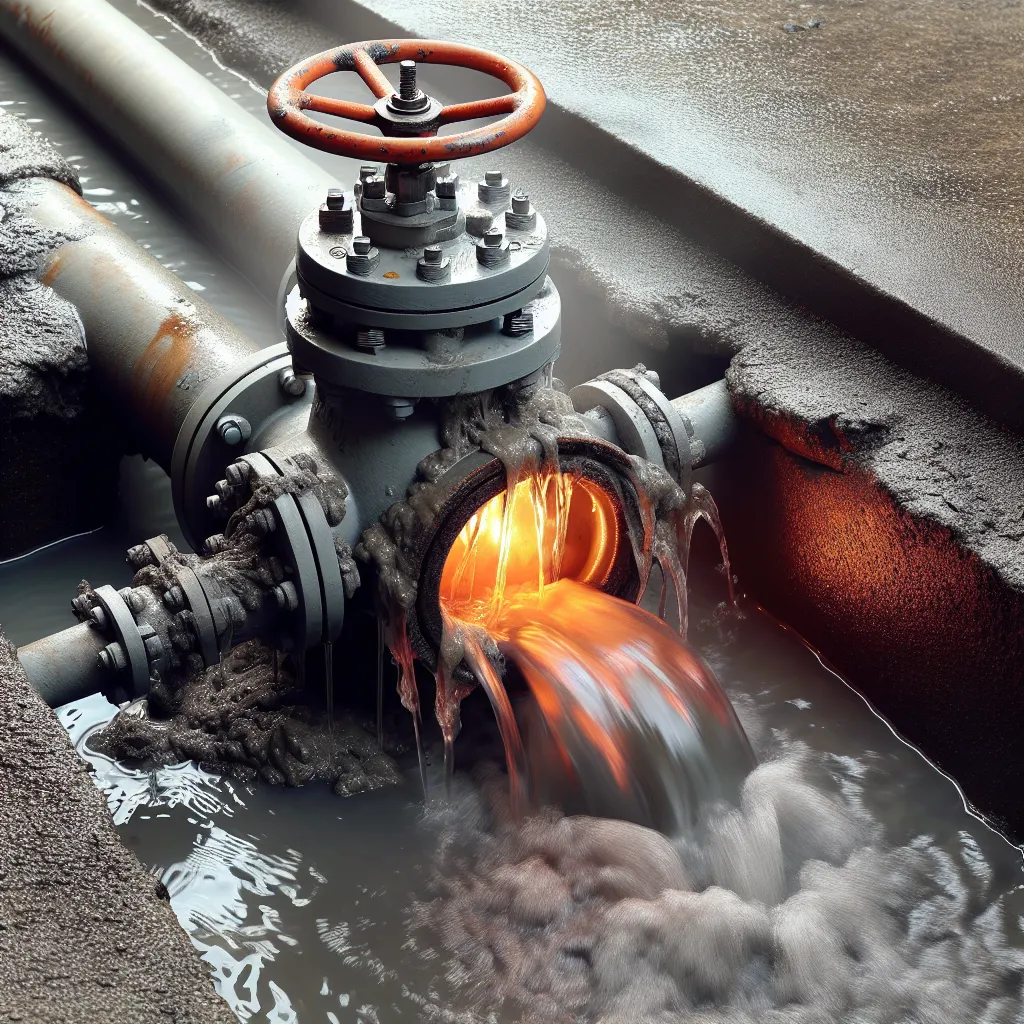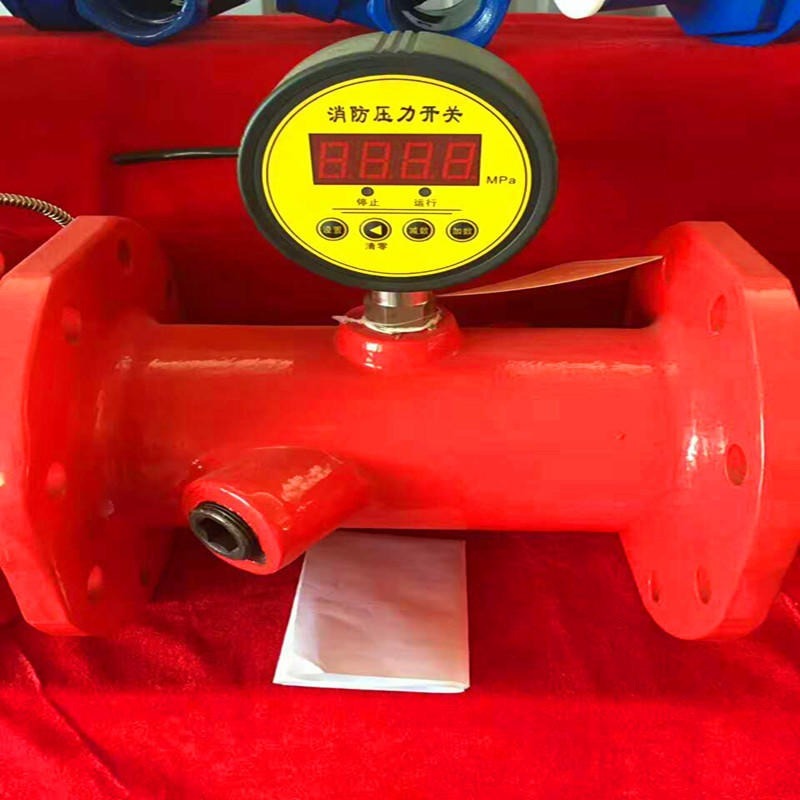Analysis of Gate Valve Leakage Causes and Treatment Measures
2024-11-25

Gate valves are the most common type of industrial valve, widely used in the petroleum, petrochemical, power plant, long-distance pipeline, and shipbuilding industries. As a fluid control device, the gate valve's closing member is a gate, which switches between open and closed states through the up and down movement of the gate, thus achieving the function of cutting off or connecting the medium in the pipeline. If a gate valve leaks, it can easily pose a hidden danger to the pipeline and equipment facilities, and may even affect personnel safety and equipment safety. Understanding the structure and operating principles of gate valves can help us operate them correctly and better understand their operating status. If a gate valve leaks, we can take the correct measures immediately to reduce economic losses and the probability of accidents. Gate valve leaks are generally divided into internal and external leaks. There are many reasons for gate valve leaks, which require in-depth analysis and research before appropriate measures can be taken.
1. Causes of Gate Valve Leakage
1.1 Low machining accuracy of the wedge seal ring causes internal leakage of the valve
Wedge seals can be divided into two categories: the first is hard sealing, also known as a metal wedge ring; the second is soft sealing, also known as a composite graphite wedge ring. If the accuracy of the wedge seal ring is low, it is easy to cause internal leakage of the gate valve.
1.2 Unstable production and operation conditions cause internal leakage of the gate valve
Unstable operating conditions during valve production and operation may cause significant changes in pressure and ambient temperature. This causes the sealing ring to withstand large impact pressure, scouring force, and deformation, resulting in an increasing gap between the sealing ring and the valve body, causing internal leakage of the valve.
1.3 Poor valve maintenance quality causes internal leakage of the gate valve
During the process of disassembling and repairing the valve, if the sealing surface is not cleaned properly when installing the wedge seal ring, leaving behind small particles and impurities, these small impurities may scratch the sealing surface during valve operation. Once a penetrating scratch is formed on the sealing surface, it will cause valve leakage.
1.4 Medium corrosion of the wedge seal ring causes internal leakage of the gate valve
When designing the wedge seal ring, more attention should be paid to the strength and corrosion resistance of the sealing ring. The surface hardness of the sealing ring should be lower than that of the valve cover sealing layer, and it should also be able to undergo plastic deformation under the action of external forces. During long-term operation, the medium may also corrode the wedge seal ring, causing gate valve leakage.
1.5 The gate valve actuator does not switch in place, causing internal leakage of the gate valve
The opening and closing of the gate valve is controlled by the actuator. The actuator relies on liquid, gas, electricity, or other energy sources and converts it into a driving force through a motor, cylinder, or other device to drive the valve to the fully open or fully closed position. If the actuator does not open or close properly, it will cause the gate valve to not fully open or close, resulting in internal leakage of the valve.
1.6 Valve body defects cause external leakage of the gate valve
Cast valve bodies often have casting defects, such as: air holes, inclusions, cracks, and pinholes. If these defects are not discovered in the factory, or if the correct repair measures are not taken after discovery, external leakage of the valve will occur during field use.
2. Treatment Measures for Gate Valve Leakage
2.1 Fix the valve body pressure plate and increase the bolt pre-tightening force
When internal leakage or a small amount of leakage occurs inside the gate valve, the first thing to do is to tighten and secure the valve body pressure plate and increase the pre-tightening force between the pressure plate and the wedge seal ring by tightening the bolts. This can help the plastic deformation of the sealing ring, thus better reducing the gap between the valve body, pressure plate, and sealing ring, and preventing leakage due to valve self-sealing. If the leakage does not change significantly when tightening and securing the bolts, the tightening measures should be stopped immediately, and other measures should be taken.
2.2 Inject sealant through the grease injection hole
When a small amount of internal leakage occurs in the valve, sealant can be injected into the sealing surface or packing through the grease injection hole to temporarily alleviate the internal leakage. When it is convenient for maintenance, the valve can be disassembled and returned to the factory for repair.
2.3 Welding and reinforcement of the gap between the valve body end face, packing gland, and pressure plate
For the treatment of valve self-sealing leakage, the valve handwheel and valve frame must be disassembled. First, cooperate with the process personnel to grasp and adjust the on-site conditions. After fully opening the valve, remove the bolts fixed on the valve bracket. After rotating the valve frame to confirm that the valve stem has not moved up or down, remove the valve frame. After removing the valve frame, the valve body should be exposed at the pressure plate of the valve, and sealing and welding should be performed at the gap between the pressure plate and the valve body. Considering the reinstallation of the valve frame after sealing the leakage position, the welding gap should be between 5 and 8 mm, and the weld angle and pressure plate position should be at a 45-degree angle, and grinding should be performed according to the actual assembly situation.
2.4 Check the actuator zero position
The actuator zero position is not set accurately and does not reach the fully closed position of the valve. Manually fully open and close the valve, and then adjust the actuator zero position to ensure that the actuator can accurately fully open or close the valve.
2.5 Valve body re-welding or return to factory for repair
When external leakage occurs, the valve manufacturer can repair the valve body defects by re-welding or return the valve to the factory for repair and replacement of the valve body. First, the existing defects in the valve body should be judged. Through cracks, penetrating defects, and shrinkage exceeding a certain area are not allowed to be repaired. In this case, the valve body can only be replaced. For valve body defects that can be re-welded, a suitable welding process should be formulated, the welding method, welding rod material, and post-weld stress relief method should be determined, and suitable non-destructive testing should be performed on the welding position to ensure that the repair meets the requirements.
3. Conclusion
This analysis examines the causes and remedies for gate valve leakage. Mitigation or elimination of valve leakage can be achieved through measures such as increasing bolt pre-tightening force, online pressure sealing, and injecting sealant. Pressure sealing should be performed by personnel with a solid professional foundation. Welding to reinforce the sealing of the valve body end face, packing gland, and pressure plate gaps, and injecting sealant, can effectively prevent leakage incidents, providing guidance and reference for resolving similar valve leakage issues.
Previous:
Next:
Contact Us
Email:
Tel/WeChat:
Address:
Chenggong Development Zone, Ximei Street, Nan'an City, Quanzhou City, Fujian Province









